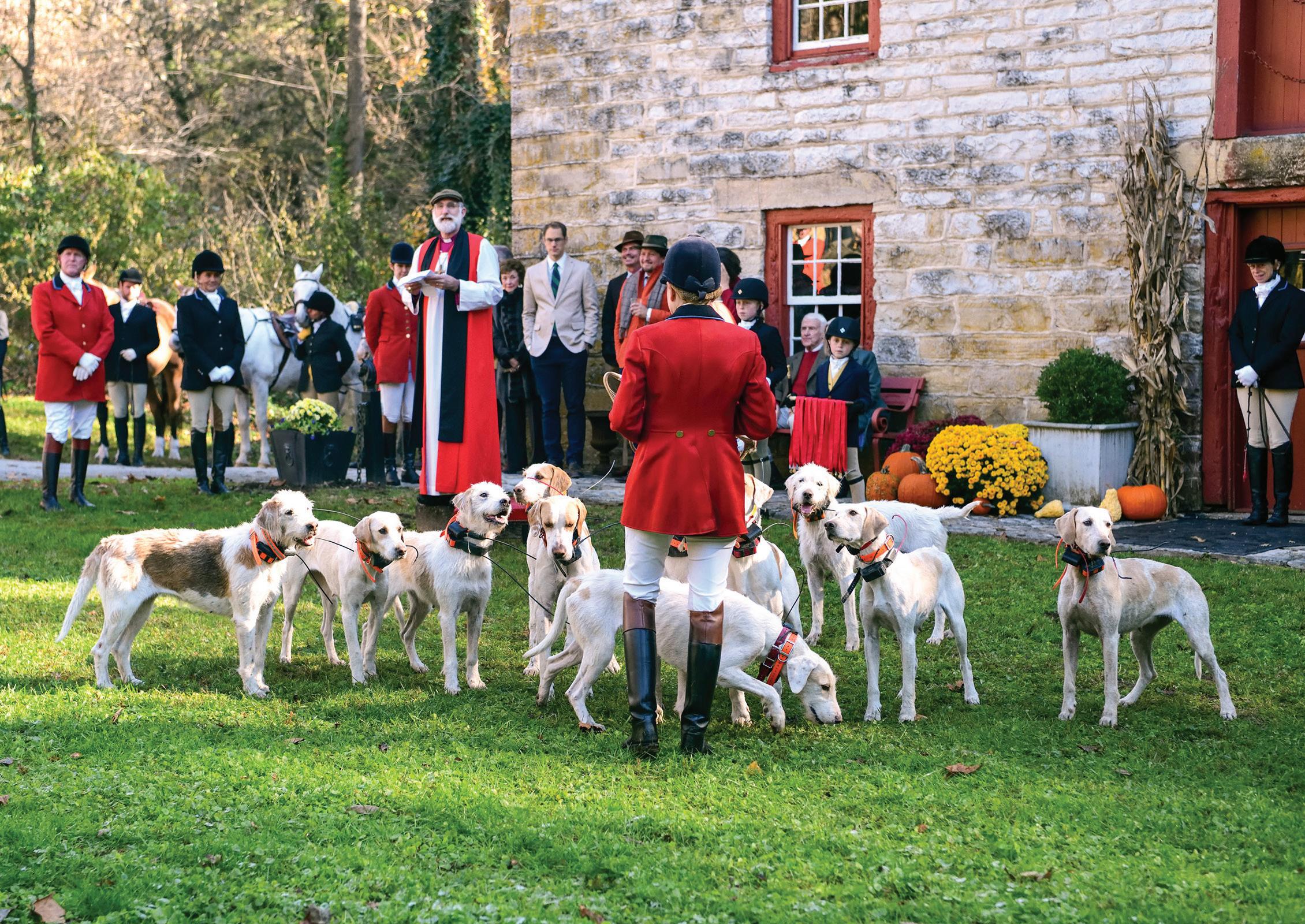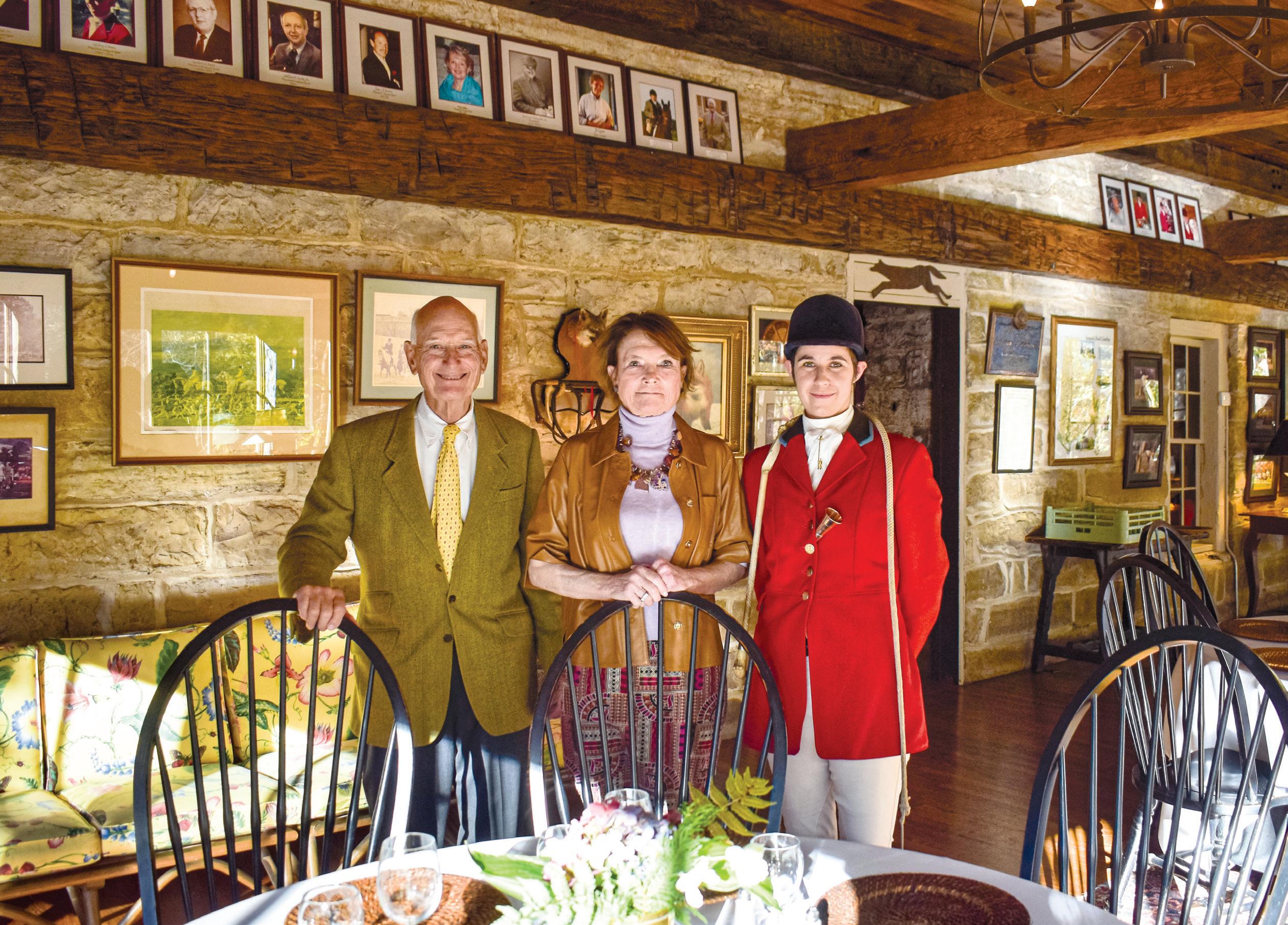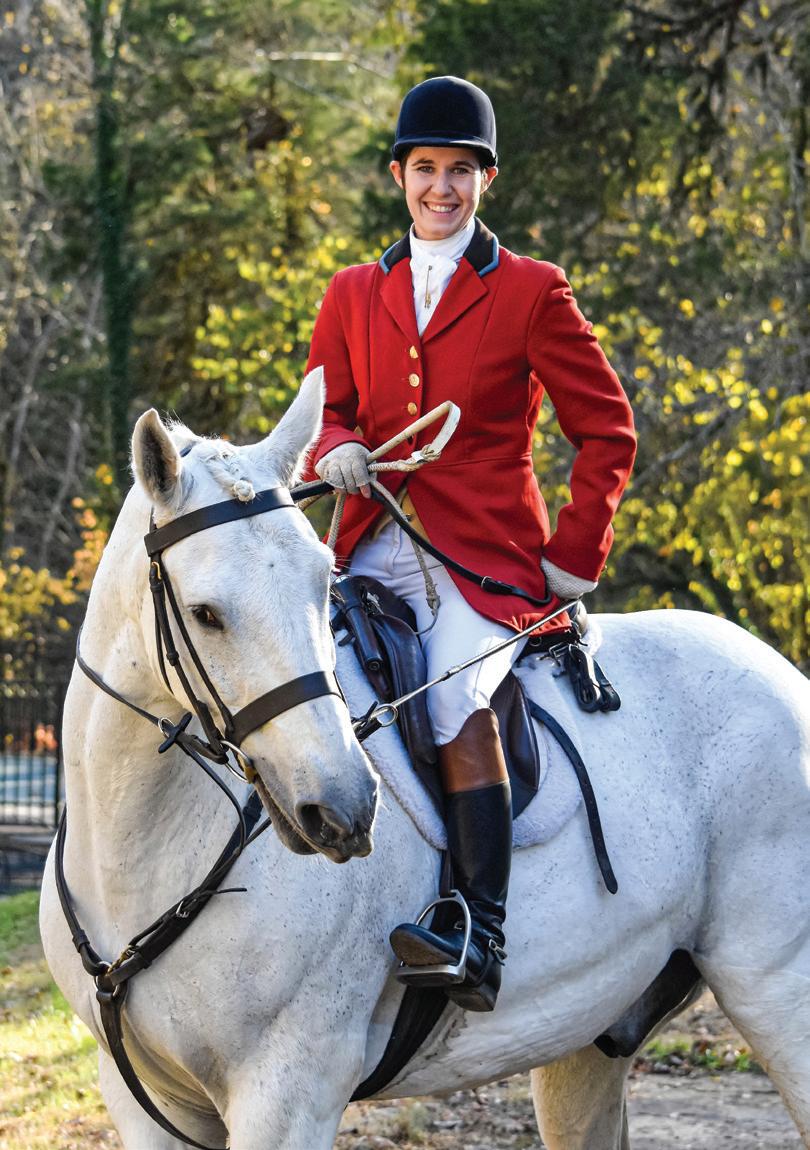
6 minute read
Ace Magazine - Lexington, KY | November 2022

Ace cover image by Kevin Nance

Horse and Hound
Welcome to the (Iroquois Hunt) Club
BY KEVIN NANCE
Even if you’ve never been fox hunting, you probably have an idea — from artists’ depictions of the ancient sport, or from that time that Lady Mary and Lord Grantham joined a hunt on Downton Abbey — of what it looks like. After being served a cup of hot cider or port from a silver tray at stirrup level in the early morning, a group of aristocrats in beautifully tailored red overcoats sets off on horseback, following a pack of trained foxhounds catching a scent and chasing a fox through a series of stunning vistas in the English countryside.


Photo credit Kevin Nance
Dr. Jack van Nagell, one of the club’s Masters of the Hunt, joined by Lilla S. Mason and Aliina Keers
Photo credit Dave Traxler
Fox hunting is now banned in most of Great Britain, but it’s alive and well in much of the world, including Central Kentucky, where it’s practiced in much the same way as it has been for centuries, with elegantly clad riders following hounds hot on the trails of coyotes rather than foxes.

Photo credit Dave Traxler
The Iroquois Hunt Club has been hunting on 50 square miles in rural Fayette and Clark counties since 1880. Except for a period from 1914 to the mid-1920s when the hunt was interrupted by World War I and its aftermath, the Iroquois club has been continuously hunting in the fall and winter months. Since 1928, the club has been based in rural southeastern Fayette County at the former Grimes Mill, which was built in 1803 and now serves the 140 members (mostly area landowners and riding enthusiasts) with tavern-like meeting rooms stuffed with fox-hunting art and memorabilia.
“It’s a fundamental equine sport in this country,” says Dr. Jack van Nagell, one of the club’s Masters of the Hunt, joined by Lilla S.Mason and Martha Venable Johnson, for an interview in the clubhouse’s handsomely decorated dining room. “It’s an amazing experience, fox hunting — or in this instance, coyote hunting. We talk about the Golden Thread, which is the magnificent relationship between a huntsman and his or her horse and hounds. It’s about observing the hunt out there in beautiful hunt country, riding on your favorite horse. It takes a lot of skill, and when it’s really well done, there’s nothing like it.”
Iroquois’s hunting season, technically under way since last month, has its ceremonial opening on November 5, with the annual Blessing of the Hounds, to be presided over by Mark Van Koevering, the Episcopal Bishop of Lexington. (The Episcopal connection to
fox hunting seems to have its roots in the era of King Henry VIII, an avid huntsman who founded the Church of England.) Weather permitting, the club hunts on Wednesdays, Saturdays and Sundays, with an average of about 30 riders joining the club’s 43 active foxhounds. (There are about 40 more hounds, either retired or puppies, back in the kennel.)
more common in recent years.) Calm and commanding in the saddle on her white gelding named Finish, Keers keeps close watch over the hounds as they sniff out their prey, using a series of verbal commands to maintain an almost military discipline: Hold hard!, meaning stop; Get behind!, meaning don’t walk in front of her; Kennel up!, meaning it’s time to go home.
“The horses also have to be very confident and used to the hounds being very close to them or under their feet,” Keers says. “They have to be brave jumpers, with the confidence and steadiness to tackle whatever’s in front of them” — which might include stone walls, streams or small triangular wooden structures called coops — “to be able to get to where the hounds are.”
Some of the hunts find participants in what’s known as the informal “ratcatcher” attire, consisting of tweed jackets, vests and tan pants. On more formal hunts, riders wear the traditional red or black jackets (with the Iroquois club’s robin’s-egg blue piping along the lapels), hard black hunt caps (which also serve as helmets), white pants and black boots with brown or patent leather knee coverings at the top. Their necklines are covered with white stock ties, actually long skeins of cloth that can double, in case of accidents, as bandages or tourniquets for people, hounds or horses.
Keers carries a hunting horn, used to signal hounds and huntsmen at different stages of a hunt, and a hunt whip, whose handle, made from a deer antler, is mostly used to open and close gates. Denoting her role as a professional huntsman, Keers’s stock tie is pinned vertically rather than horizontally; she also wears five shiny buttons on her jacket, rather than the four worn by others.
“The reason that’s important is that the hunt crosses lots of people’s property, many different farms,” Mason says. “If a farmer had an issue on his land and needed to find a professional from the hunt, he would know by different parts of their dress, including the buttons. He would also know from the blue piping who’s crossing his property.”
Although coyotes are rarely killed on the hunts — it happens in less than 10 percent of the outings, the club says, and sometimes not at all in an entire season — van Nagell says the practice is still an important service to cattle farmers such as himself, largely because it disrupts the tendency of coyotes to form packs that can menace young or sickly calves in winter. “A calf standing outside in 20 degrees in the middle of a blizzard, a pack of coyotes would be very interested in,” he says. “It’s very rare, but it does happen.”
The Iroquois hunts are led by the club’s kennel huntsman, Aliina Keers, a graduate of the Master of Foxhounds Association Professional Development Program now in her sixth season at Iroquois. (Women working as top professional huntsmen were once fairly rare in the sport but have become
Still, he says, “The emphasis is not on killing. It may happen, but it’s more about the chase, observing hounds hunting, trying to stay up with the hunt, and listening to the hounds as they speak to each other. That is what most people enjoy:

Photo by Kevin Nance for Ace Magazine
Aliina Keers
Photo credit Kevin Nance
Photo credit Dave Traxler

